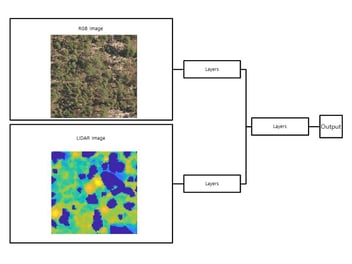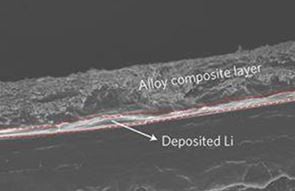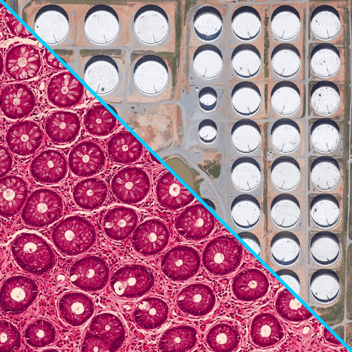Unveiling the Fundamentals of Infrared Thermal Imaging

Discover the fascinating world of infrared thermal imaging and understand its core principles and applications.
Understanding Infrared Radiation
Infrared radiation, also known as thermal radiation, is a type of electromagnetic radiation that is not visible to the human eye. It falls in the wavelength range between visible light and microwaves. Unlike visible light, which is reflected or absorbed by objects, infrared radiation is emitted by all objects with a temperature above absolute zero.
Understanding the behavior of infrared radiation is crucial in the field of infrared thermal imaging. It helps us capture and analyze thermal images, which provide valuable insights into temperature variations in different objects and surfaces. By detecting and measuring the amount of infrared radiation emitted by an object, we can determine its temperature and identify potential issues or anomalies.
How Infrared Cameras Work
Infrared cameras, also known as thermal cameras or thermographic cameras, are the key tools used in infrared thermal imaging. These cameras are designed to detect and capture infrared radiation emitted by objects and convert it into a visible image that we can analyze.
The working principle of infrared cameras is based on the detection of temperature variations. They contain special sensors, usually made of materials such as indium gallium arsenide or microbolometers, which are sensitive to infrared radiation. When the infrared radiation hits these sensors, they generate an electrical signal proportional to the temperature of the object. This signal is then processed and converted into a thermal image, which displays different temperature levels using a color scale.
Infrared cameras can capture thermal images in real-time, allowing us to visualize temperature variations across different objects and surfaces. They are widely used in various industries, including electrical maintenance, building inspections, medical diagnostics, and security surveillance.
Applications of Infrared Thermal Imaging
Infrared thermal imaging has a wide range of applications across different industries and fields. Here are some key areas where it is commonly used:
- Electrical Maintenance: Infrared thermal imaging is used to detect electrical faults, such as loose connections, overloaded circuits, or faulty components, in electrical systems. By identifying these issues early on, potential hazards and costly breakdowns can be prevented.
- Building Inspections: Infrared thermal imaging is used to identify energy inefficiencies, moisture intrusion, insulation defects, and structural issues in buildings. It helps in detecting hidden problems that are not visible to the naked eye, enabling timely repairs and maintenance.
- Medical Diagnostics: Infrared thermal imaging is used in medical applications, such as detecting breast cancer, monitoring blood flow, and identifying inflammation or infection. It provides a non-invasive and radiation-free method for early detection and diagnosis.
- Security Surveillance: Infrared thermal imaging is used for surveillance purposes, especially in low-light or no-light conditions. It can detect human or animal presence by capturing their thermal signatures, making it useful for perimeter security and night vision systems.
These are just a few examples of the diverse applications of infrared thermal imaging. With advancements in technology, new applications continue to emerge, making it an invaluable tool in various industries.
Key Benefits of Infrared Thermal Imaging
Infrared thermal imaging offers several key benefits that make it a valuable tool in numerous applications. Some of the key benefits include:
- Non-contact and Non-destructive: Infrared thermal imaging allows temperature measurements to be taken without physical contact with the object being inspected. This non-contact feature makes it suitable for analyzing objects that are difficult to access or in hazardous environments. Additionally, it is a non-destructive testing method that does not damage the object being inspected.
- Fast and Real-time: Infrared cameras can capture thermal images in real-time, providing instant feedback on temperature variations. This allows for quick decision-making and timely interventions in various applications.
- Comprehensive Analysis: Infrared thermal imaging provides a comprehensive analysis of temperature patterns and variations across different objects and surfaces. It helps in identifying anomalies, detecting hidden issues, and monitoring changes over time.
- Cost-effective: By detecting potential issues early on, infrared thermal imaging helps in preventing costly breakdowns, reducing energy consumption, and optimizing maintenance efforts. It can contribute to significant cost savings in various industries.
- Safety and Security: Infrared thermal imaging enhances safety and security by detecting anomalies, identifying potential hazards, and monitoring critical systems. It is particularly useful in hazardous environments or low-light conditions where traditional visual inspections may not be effective.
These benefits make infrared thermal imaging a powerful tool with wide-ranging applications across industries and fields.
Understanding Infrared Image Analysis using AI
In recent years, the field of infrared thermal imaging has seen significant advancements in image analysis using artificial intelligence (AI) techniques.
AI-based algorithms and machine learning models can be trained to analyze thermal images and automatically detect specific patterns or anomalies. This enables faster and more accurate analysis, as well as the identification of complex thermal patterns that may not be easily detectable by human observers.
Through AI-powered image analysis, infrared thermal imaging can be used for predictive maintenance, automated defect detection, and even early detection of diseases in medical applications.
As AI continues to evolve, the potential for enhancing infrared image analysis and unlocking new applications in various industries is boundless.
In conclusion, infrared thermal imaging is a fascinating field that combines physics, engineering, and technology to capture and analyze thermal information. Its applications span across industries and provide valuable insights into temperature variations, energy inefficiencies, and potential issues. With advancements in technology, such as AI-powered image analysis, the capabilities of infrared thermal imaging continue to expand, making it an essential tool in the modern world.
No-code Machine Learning for Thermal Imaging - DeepBlock.net





